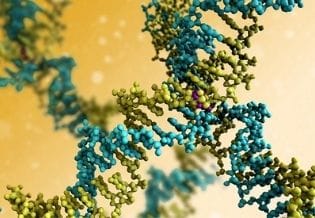Aims & Scope
Journal of Proteomics and Genomics Research (JPGR) publishes fundamental molecular and cellular research elucidating protein structure-function relationships, gene regulation mechanisms, and omics-driven discovery in biological systems. We focus on basic science advancing molecular understanding, not clinical outcomes or therapeutic applications.
Core Research Domains
Tier 1: Priority Fast-Track ReviewProteomics & Protein Science
- Protein structure determination and structural proteomics
- Post-translational modifications (phosphorylation, ubiquitination, glycosylation)
- Protein-protein interactions and complex assembly
- Mass spectrometry-based proteomics and quantitative proteomics
- Protein folding, stability, and quality control mechanisms
- Protease function and proteolytic processing
"Quantitative phosphoproteomics reveals novel kinase substrates regulating cell cycle progression in yeast"
Genomics & Gene Regulation
- Transcriptional regulation and chromatin dynamics
- Epigenetic modifications (DNA methylation, histone modifications)
- Gene expression profiling and transcriptomics
- Non-coding RNA function (miRNA, lncRNA, circRNA)
- Genome organization and nuclear architecture
- Comparative and evolutionary genomics
"Genome-wide mapping of enhancer-promoter interactions reveals tissue-specific transcriptional networks"
Cellular Signaling & Molecular Pathways
- Signal transduction cascades and pathway crosstalk
- Receptor-ligand interactions and cellular communication
- Metabolic pathway regulation and enzyme kinetics
- Cell cycle control and checkpoint mechanisms
- Apoptosis and autophagy molecular machinery
- Stress response pathways and cellular adaptation
"Mechanistic dissection of mTOR pathway activation by amino acid sensing complexes"
Functional Genomics & Genome Engineering
- CRISPR/Cas systems and genome editing mechanisms
- RNA interference and gene silencing pathways
- Functional screening and genetic interaction mapping
- Synthetic biology and engineered genetic circuits
- Gene knockout/knockin phenotypic analysis
- Transposon biology and mobile genetic elements
"Genome-scale CRISPR screen identifies essential genes for ribosome biogenesis in mammalian cells"
Secondary Focus Areas
Tier 2: Cross-Disciplinary & Methodological InnovationMulti-Omics Integration
Systems-level studies combining proteomics, genomics, transcriptomics, and metabolomics to elucidate molecular networks and regulatory hierarchies in biological systems.
Computational Biology & Bioinformatics
Algorithm development for sequence analysis, structure prediction, pathway modeling, and machine learning applications in omics data interpretation.
Structural Biology & Biophysics
Molecular structure determination (X-ray, NMR, cryo-EM), protein dynamics, thermodynamics of biomolecular interactions, and single-molecule biophysics.
Microbial & Environmental Genomics
Metagenomics, microbial community analysis, horizontal gene transfer, and molecular adaptation to environmental conditions.
Plant & Agricultural Molecular Biology
Plant gene regulation, photosynthesis mechanisms, stress response pathways, and molecular basis of agronomic traits.
Molecular Immunology
Immune receptor signaling, antigen presentation mechanisms, antibody structure-function, and molecular basis of immune recognition (not clinical immunology).
Emerging Research Frontiers
Tier 3: Selective Consideration with Additional ReviewWe selectively consider pioneering studies in emerging areas that advance fundamental molecular understanding. These submissions undergo additional editorial review to ensure alignment with our basic science focus.
- Single-cell omics technologies revealing cellular heterogeneity and molecular states
- Spatial transcriptomics and proteomics mapping molecular landscapes in tissues
- Long-read sequencing technologies for structural variant discovery and isoform analysis
- Artificial intelligence applications in protein structure prediction and molecular design
- Phase separation and biomolecular condensates in cellular organization
- Extracellular vesicle molecular cargo and intercellular communication mechanisms
- Ancient DNA analysis and molecular paleogenomics
Article Types & Editorial Priorities
Fast-Track Review
- Original Research Articles
- Systematic Reviews & Meta-Analyses
- Methods & Resources
- Technology Reports
Standard Review
- Short Communications
- Data Notes
- Perspectives & Commentaries
- Protocol Papers
Limited Acceptance
- Opinion Pieces
- Hypothesis Articles
- Meeting Reports
- Book Reviews
Editorial Standards & Requirements
Reporting Guidelines
All submissions must adhere to appropriate reporting standards:
- ARRIVE 2.0 for animal studies
- MIQE for qPCR experiments
- MIAPE for proteomics data
- MINSEQE for sequencing studies
- STROBE for observational molecular studies
Data Availability
We require public deposition of:
- Sequencing data (GEO, SRA, ENA)
- Proteomics data (PRIDE, ProteomeXchange)
- Structural data (PDB, EMDB)
- Code and analysis scripts (GitHub, Zenodo)
- Original images and raw data upon request
Ethics & Reproducibility
Mandatory requirements include:
- Institutional ethics approval for animal/human samples
- Detailed methods enabling reproduction
- Statistical power calculations where applicable
- Blinding and randomization descriptions
- Antibody validation and reagent sources
Preprint Policy
We support open science practices:
- Preprint posting encouraged (bioRxiv, arXiv)
- Preprints do not affect consideration
- Conference presentations permitted
- Preprint DOI should be disclosed at submission
- Final version linked to preprint upon publication


